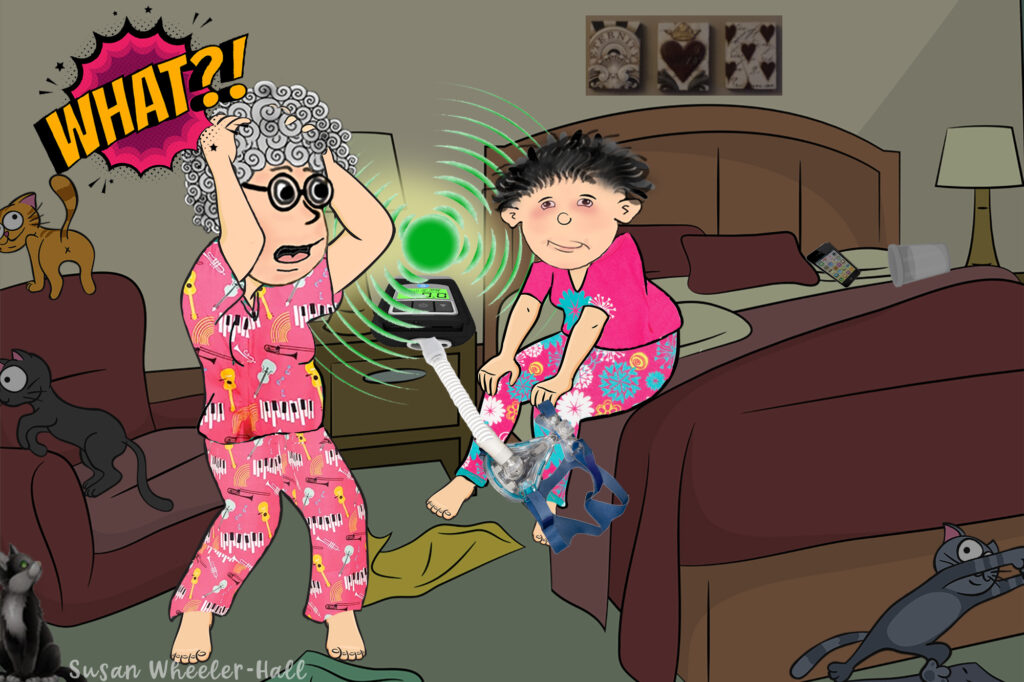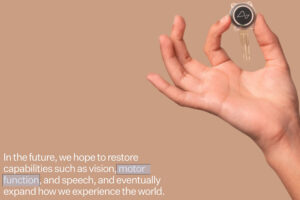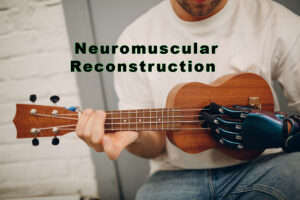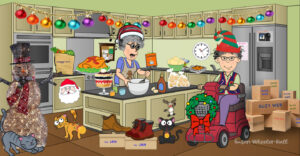Time to take a breath
Two nights ago my breathing machine alarm went off at 2 am and, of course, it woke us up with a sudden jolt. It makes a loud ear-piercing noise and the machine lights up at the same time. Whoa! it was time to take a breath.
Initially, my partner thought it was her phone alarm. She has it set to wake her up very early each day so that she can head out for an early morning walk.
She grabbed her phone to shut off the alarm but, of course, it did not stop the blaring noise.
Not realizing it was my ventilator machine and not her iPhone, she was concerned it would wake me up.
At this point, I woke up – blinded by the sudden light and awful noise.
I look over with my limited vision and I see the silhouette of my partner swinging her arms around as she shakes her phone.
Completely discombobulated I think “What’s happening?”
Next, I see her toss off the blankets and jump up still shaking her phone to try and make the noise stop.
In the process, she swears, “Oh f—”, as she knocks over a glass of water on her nightstand – with water spilling on her feet, on the bed, and on the carpet.
And the darn alarm is still blaring!
Sudden stress
By now I am fully awake, but she was able to run over to my machine faster than I was able to sit up and attend to it myself. She pushed a few buttons and finally, the mind-bending noise stopped.
We read the alarm message but could not figure out the problem – because everything seemed to be functioning fine. We turned it off, reset it, and start it up again. All okay.
Take a breath, Susan.
Except now my partner has a soggy wet bed to sort out before she can climb back into bed.
Adjusting as best she could we both finally returned to sleep.
An hour later – the alarm kicks off again!!
Annoyed, but aware of the problem, we reset the machine and try again.
After that, my partner was able to return to sleep – but I could not.
Take a breath, Susan.
The above scenario is comical and I do enjoy a good laugh whenever I recall the series of events.
Stark reality
However, there is a painful underbelly to the situation for me. The stark reality is that without a BiPAP breathing machine I cannot sleep. Which is necessary to stay alive.
This is not new information, in fact, this has been the case for 27 years now. I am well adjusted to this level of disability and for the most part, it is fine and I don’t think about it.
And yet, there I was lying in the dark running through a series of important questions:
What if the alarm fails next time – Where would I be then?
What is wrong with the machine?
Would I simply die peacefully in the night?
I am certainly not ready for that, am I?
Dare I return to sleep?
These and other worrisome thoughts rushed forward in waves with enough power to keep me awake whenever slumber tried to overtake me. No, I mustn’t sleep. No, I mustn’t.
The worried thoughts ignited a variety of emotional feelings such as sadness and fear. I could feel my body tensing up which in turn heightened my chronic pain.
Feeling more pain in my body woke me up on another level; the level of inner awareness.
I became aware of my own thoughts and saw they were working against my better interests. I must calm down, I must slow these crashing worrisome waves.
Calm down
Recalling a couple of other situations when my breathing machine failed, reminded me that this is a part of living life with aids, devices, and support.
It takes courage to take these mishaps in stride and not let them run your “life show”.
Cultivating this courage takes effort but it is possible.
Along with the gratitude that I feel for my breathing ventilator there is also a feeling of groundlessness. It’s not comfortable and I don’t like how it feels.
Over the years I have worked hard to make friends with this unwanted feeling. I gently moved my thoughts beyond myself to do a Buddhist breathing meditation practice called Tonglen.
I thought about my brother, who also lives with a breathing machine,
I thought about my friend’s mother who lives with oxygen support 24/7,
I thought about all the people in hospital ICUs on ventilators and oxygen due to COVID-19.
I held them all in my heart and took in a deep breath (aided by my machine).
I did this with the intention to breathe in their pain and fear along with mine – and with my out-breath, I sent us all the wish for relief and relaxation.
As I did this a few times I could feel myself beginning to relax. There is much comfort in not feeling alone with this groundless feeling.
We all face deep struggles in life, with illnesses and losses of loved ones …but we are not alone – even when it feels like we are.
Take a breath
You might also like to listen to my conversation with Katherin Haghighi











